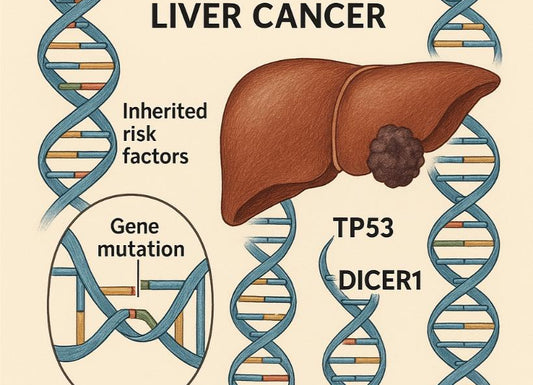Does Oatmeal Spike Blood Sugar?
 Written By
Abel Tamirat, MD
Written By
Abel Tamirat, MD

Oatmeal is often praised as one of the healthiest breakfast choices — rich in fiber, heart-friendly, and satisfying. But for people managing diabetes or watching their blood sugar, one question comes up frequently: does oatmeal spike blood sugar?
The short answer is — it depends on the type of oatmeal, how it’s prepared, and what you eat with it.
Let’s look at how oatmeal affects blood glucose and how to make it a truly blood sugar–friendly meal.
How Oatmeal Affects Blood Sugar
Oatmeal is made from whole oats, which are naturally high in carbohydrates. When digested, these carbs break down into glucose, the body’s main source of energy.
However, oats also contain soluble fiber, particularly beta-glucan, which slows down digestion and glucose absorption. This helps prevent sudden spikes in blood sugar and promotes a feeling of fullness.
That said, not all oatmeal is created equal. The processing method greatly affects how quickly your body converts oats into glucose.
Types of Oatmeal and Their Blood Sugar Impact
1. Steel-Cut Oats
-
Least processed form of oats.
-
Have a low glycemic index (GI), typically around 42–52.
-
Digest slowly and cause a gradual rise in blood sugar.
Best choice: Ideal for people with diabetes or insulin resistance.
2. Old-Fashioned Rolled Oats
-
Flattened and steamed for faster cooking.
-
Moderate GI (around 55).
-
Still provide steady energy when paired with protein or fat.
Good choice: Balanced option for most people.
3. Instant or Flavored Oatmeal
-
Heavily processed and often loaded with sugar.
-
High GI (65–80 or higher).
-
Can cause rapid blood sugar spikes.
Avoid: Choose plain oats and add your own flavorings instead.
Factors That Influence Blood Sugar Response

Several things can change how your body reacts to oatmeal:
-
Portion Size: Large servings can raise blood sugar, even with healthy oats. Stick to about ½ cup of dry oats per meal.
-
Added Sugar: Sweetened packets or toppings like brown sugar, syrup, or flavored creamers cause spikes.
-
Toppings: Pairing oats with protein (nuts, yogurt) or healthy fats (avocado, nut butter) helps stabilize blood sugar.
-
Cooking Method: The longer oats cook and soften, the higher their glycemic impact. Slightly firmer oats digest more slowly.
The Glycemic Index (GI) of Oatmeal
The glycemic index measures how quickly a food raises blood glucose levels.
-
Low GI (55 or less): Digests slowly, steady glucose rise.
-
Medium GI (56–69): Moderate glucose response.
-
High GI (70+): Rapid spike and drop in blood sugar.
Steel-cut and old-fashioned oats are low to moderate GI, while instant oats are high GI. Choosing less processed oats helps minimize sugar spikes.
Making Oatmeal More Blood Sugar Friendly
Here are some practical ways to enjoy oatmeal without worrying about sharp increases in blood sugar:
-
Choose whole or steel-cut oats.
-
Avoid flavored instant oats — make your own version with cinnamon or vanilla extract.
-
Add protein: Mix in Greek yogurt, protein powder, or a boiled egg on the side.
-
Add healthy fats: Top with chia seeds, flaxseed, almonds, or peanut butter.
-
Watch portion sizes: Stick to ½ cup of dry oats per meal.
-
Add fiber: Toss in berries or apple slices for natural sweetness and extra fiber.
These additions slow digestion, lower the meal’s overall glycemic load, and keep you full longer.
Signs Oatmeal Might Be Spiking Your Blood Sugar

Even healthy foods can raise blood sugar differently for each person. You might be experiencing spikes if you notice:
-
Fatigue or hunger a couple of hours after eating.
-
Thirst or frequent urination.
-
Brain fog or irritability.
If you have diabetes, using a continuous glucose monitor (CGM) or checking your glucose 1–2 hours after eating oatmeal can help you learn how your body reacts.
Health Benefits of Oatmeal
When eaten wisely, oatmeal provides many benefits beyond blood sugar control:
-
Supports heart health by lowering LDL (bad) cholesterol.
-
Improves digestion due to its soluble fiber.
-
Helps with weight management by promoting satiety.
-
Provides steady energy for longer periods.
Oatmeal is also a great source of magnesium, iron, and plant-based protein, making it a nutrient-dense breakfast option.
What to Avoid Adding to Oatmeal
To keep your blood sugar balanced, steer clear of:
-
Brown sugar or honey in large amounts.
-
Flavored syrups or sweetened nut milks.
-
Dried fruits in excess (they’re concentrated sources of sugar).
-
Processed toppings like granola clusters or chocolate chips.
Instead, use cinnamon, unsweetened cocoa powder, or vanilla extract for flavor without added sugar.
A Blood Sugar–Friendly Oatmeal Recipe

Ingredients:
-
½ cup steel-cut oats.
-
1 cup water or unsweetened almond milk.
-
¼ cup blueberries or raspberries.
-
1 tablespoon ground flaxseed.
-
A sprinkle of cinnamon.
-
Optional: 1 tablespoon almond butter.
Directions:
-
Cook oats in water or almond milk until tender.
-
Stir in flaxseed and cinnamon.
-
Top with berries and almond butter.
This meal is high in fiber, protein, and healthy fats — everything you need for stable energy and blood sugar control.
The Bottom Line
Oatmeal does not have to spike blood sugar — if you choose the right kind and pair it wisely. Steel-cut or rolled oats, combined with protein and healthy fats, provide steady energy and help prevent sugar highs and crashes.
Instant and flavored oatmeals, on the other hand, can raise blood sugar quickly due to added sugars and processing.
By making small adjustments, you can enjoy oatmeal as part of a healthy, balanced diet that supports blood sugar stability and overall wellness.
Want to monitor your glucose levels from home?
You can take an at-home metabolic and blood sugar health test through Ribbon Checkup and get results in days.
Related Resources
Want to understand more about how diabetes affects your body? Try these guides:
-
Is Feeling Sleepy After Eating a Sign of Diabetes? – Digestive and fatigue signs explained.
-
Diabetes and Swollen Feet – Learn how diabetes impacts circulation.
-
Does Diabetes Cause Hair Loss? – Explore lesser-known complications.
References
-
Chen, V., Zurbau, A., Ahmed, A., Khan, T. A., Kendall, C., & Sievenpiper, J. L. (2021). Effect of oats and oat-fibre on glycaemic control and insulin sensitivity: A systematic review and meta-analysis of randomised controlled trials. Nutrition Reviews, 79(11), 1155–1170. https://www.ncbi.nlm.nih.gov/pmc/articles/PMC8340782/
-
Fardet, A. (2019). Oat-based foods: Chemical constituents, glycaemic index, and the impact of processing. Food Reviews International, 35(4), 343–365. https://www.ncbi.nlm.nih.gov/pmc/articles/PMC8229445/
-
Healthline. (2021, March 18). How to enjoy oatmeal if you have diabetes. https://www.healthline.com/health/diabetes/oatmeal
-
Johnson, J. (2023, June 26). Oatmeal for diabetes: Benefits, nutrition, and tips. Medical News Today. https://www.medicalnewstoday.com/articles/311409
-
“Glycaemic index: A helpful tool for diabetes?” (n.d.). Mayo Clinic. https://www.mayoclinic.org/diseases-conditions/diabetes/expert-answers/diabetes/faq-20058466
-
“Is oatmeal good for you?” (2024, March). Cleveland Clinic Health Essentials. https://health.clevelandclinic.org/how-healthy-is-oatmeal-for-breakfast-really
-
Rupa Health. (2023). Oats for diabetes: The best breakfast for controlling blood sugar levels. https://www.rupahealth.com/post/oats-for-diabetes-the-best-breakfast-for-controlling-blood-sugar-levels

Dr. Abel Tamirat is a licensed General Practitioner and ECFMG-certified international medical graduate with over three years of experience supporting U.S.-based telehealth and primary care practices. As a freelance medical writer and Virtual Clinical Support Specialist, he blends frontline clinical expertise with a passion for health technology and evidence-based content. He is also a contributor to Continuing Medical Education (CME) programs.



